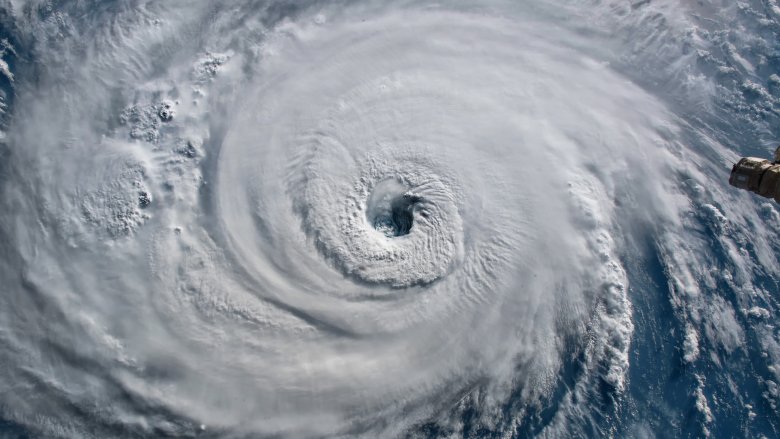What Is The Difference Between A Cyclone And A Hurricane?
Cyclones and hurricanes have a lot in common. They're both great names for roller coasters, mixed drinks, and NERF products, but if you think the terms are interchangeable, you've been swirling in a vortex of misinformation. The confusing part is that "cyclone" and "hurricane" are both used in generic and specific contexts.
Hurricanes, typhoons and cyclones are all classified by meteorologists as "tropical cyclones," which is used here as a generic term for a "rotating, organized system of clouds and thunderstorms that originates over tropical or subtropical waters," according to the U.S. National Oceanic and Atmospheric Administration. Once a tropical cyclone reaches "maximum sustained winds of 74 mph (64 knots) or higher," it goes from a tropical storm classification to a hurricane, in the generic sense.
At this point, according to BBC, where these hurricanes form will determine their specific name. If a hurricane starts in the North Atlantic Ocean or Northeast Pacific it gets to keep the name hurricane, while the same storm in the South Pacific and Indian Oceans would be called a tropical cyclone. Lest we forget, there are also typhoons, which are born on the Northwest Pacific Ocean. To be clear, once a tropical cyclone is classified as a hurricane due to its wind speed, what it will be called is solely based on the region where it forms.
Despite the fact that the World Meteorological Organization names hurricanes to help quickly differentiate them, a lack of creativity pervades. The practice began in 1953 and only used women's names, a practice which continued until 1979, when male names were introduced. Today, the WMO uses just six lists of names, or one per year, alternating between male and female names. Now that we're really feeling the effects of climate change, the lists may end up rotating fast enough that they become hurricanes themselves.
